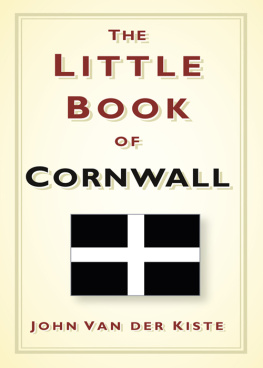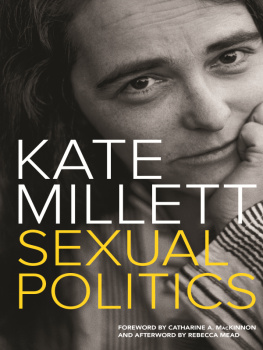FOREWORD
At first sight it seems incongruous to speak of the Nooks and Corners to be found in so rugged a land as Cornwall. The masses of rock at Tintagel, Tol-Pedn, and the Lizard, the sheer drop of the High Cliff and the Dodman, the moors, the cromlechs, and the granite tors, are so impressive that we are apt to overlook the fertile valleys that intersect the country, the coves, coombes, and "pills" in which the hillside vegetation is often semi-tropical, and where the houses are embowered in flowering shrubs till they look like Jacks-in-the-Green that have taken root.
Nor do these picturesque villages, sheltered and fruitful, this magnificent coast scenery, these grey moors, comprise the whole of this half-smiling, half-frowning land. Here in out-of-the-way places are relics of forgotten creeds and peoples, earthworks, amphitheatres, castles, the caves of smugglers, and the subterranean hiding-places of neolithic man. There is so much to interest, so much to seealmost too much it would seem, certainly too much for any one holiday; but Cornwall is a place to go to again and again, to go to till it seems as your own land, and its people have forgiven you for being a "foreigner."
This Cornish folk, clannish but kindly, has of late years been decreasing. Not only is there the competition of foreign tin, but the lodes being now deep the cost of home production has proportionately increased. "Cousin Jack" therefore has to go in search of more remunerative metal, leaving "Cousin Jenny" at home to manage as best she can on his remittances.
Warnings
"You can only see Cornwall by walking through it," said George Borrow, but the traveller must bear in mind that a name, large on the map, is apt to materialise into a few cottages, a lonely farmhouse, or a rocky gorge with never an inhabitant. Nor though the voice of the tourist has now for several years been heard in the land has the response, in hotels, been great; while there are not as many country inns as might be expected. The cheerful, pleasure-loving Cornishman has another aspect to his character. Generally a Nonconformist and a Sabbatarian heperhaps more particularly shethinks the fewer inns the better. Hamlets the size of which would lead one to expect a wayside tavern are often drawn blank, and it is as well to make inquiry, when mapping out the day's journey, as to the accommodation to be found at its latter end.
It cannot be too firmly impressed upon the traveller that along the northern and western shores both boating and bathing are unsafe. It is a dangerous coast. Fortunately very few boats are kept, and these are seldom let out to strangers; but in the matter of bathing the tourist depends upon his own wisdom, and not only is there a bad undertow but the big rollers from the Atlantic come in when least expected.
Moreover he must, when following these cliff paths, be on the look-out for blow-holes. These sinister cavities result from the action of the sea at the cliff base and of the fresh water springs above. A depression is gradually formed, the surface sinks to be washed out by the tides, till at last a round hole has been formed. This is the blow-hole. In course of time the whole of the side towards the sea breaks away, leaving a tiny bay, which gradually enlarges. The Cornish who do not imagine that any one could be so foolish as to walk along this dangerous coast after dark do not safeguard the blow-holes, and it is as well to be on the look-out.
The Crosses and Churches
A word with regard to the innumerable crosses and churches.
At an early date in the history of Christianity, saints from the neighbouring countries of Brittany, Ireland and Wales appear to have poured into Cornwall. Some floated over on their altar-stonesa poetical way of saying they brought the said stones with themothers on a miraculous leaf, i.e., a coracle, while yet others appear to have walked! On arrival they found a large number of upright slabs and boulders, relics of an earlier creed and vanished race. With the sensible early-Christian habit of turning everything to account they soon invented a history and found a use for the stones.
On a lonely moorland these big menhirs made excellent way-marks; by somepossibly blocks that tradition accounted holythe saints built their oratories, others they carved into rude crosses, and others they used as a centre about which to gather the countrypeople for service. As the local preaching-place, these last stones, like the oratories themselves, thus became the forerunners of the parish churches.
One reason for the multiplicity of these crossesand unless those at any place should be exceptional, they will not be mentionedmay be found in the will of a certain Dr. Mertherderwa who, dying in 1447, directed that "new stone crosses are to be put up of the usual kind in those parts of Cornwall from Kayar Beslasek to Camborne Church, where dead bodies are rested on their way to burial, that prayers may be made and the bearers take some rest."
There are six different kinds of crosses. Upright slabs with a Latin cross front and back; Round-headed crosses; Holed crosses, of which only twenty-seven instances are known; Latin crosses, Gothic crosses and ornamented crosses.
The Churches
When Cornwall built her innumerable small but beautiful churches, that is to say from the thirteenth (and earlier) to the sixteenth century, she showed that an ornate and vivid ritual was to her taste. She objected to and resisted the Reformation, and on its becoming an established fact went peacefully to sleep, as far as religion was concerned, until the arrival of John Wesley. As a consequence very few of the churches are modern, and most of them have Norman remainssome antiquarians even say Saxonand a good deal of old carved oak in benches, screens, and roofs. Some of this carving is of considerable merit, and the same may be said, though more doubtfully, of the numerous frescoes; but unless the mural paintings and bench ends are in some way remarkable they will not be insisted on, nor will the Norman and other survivals in the architecture be discussed.
The Plan of the Book
The roads from Launceston and from Saltash to the Land's Endand the main roads of Cornwall are excellent, as good as any in Englandgo as far as possible by way of the towns. The rivers, too, are no great matter, in fact precisians have maintained that there are none. The Tamar, which best deserves the name, was fixed as the eastern boundary by Athelstane in 926, while the Fal and Helford Rivers are mainly sea creeks, and the Camel and Fowey which until they become estuaries are never wider than a man, provided with a pole, can leap, are really only brooks of a fine and Tennysonian quality.
Undoubtedly then the way to see Cornwall is to follow the country roads that lead along the shore, beginning at the north where the coach crosses the border on its way from Clovelly Dykes to Bude, and ending at the Tamar. There would then remain only the reaches of that lovely river, the moorland, and what nooks and corners are to be found off the highways that run through the middle of the county.









